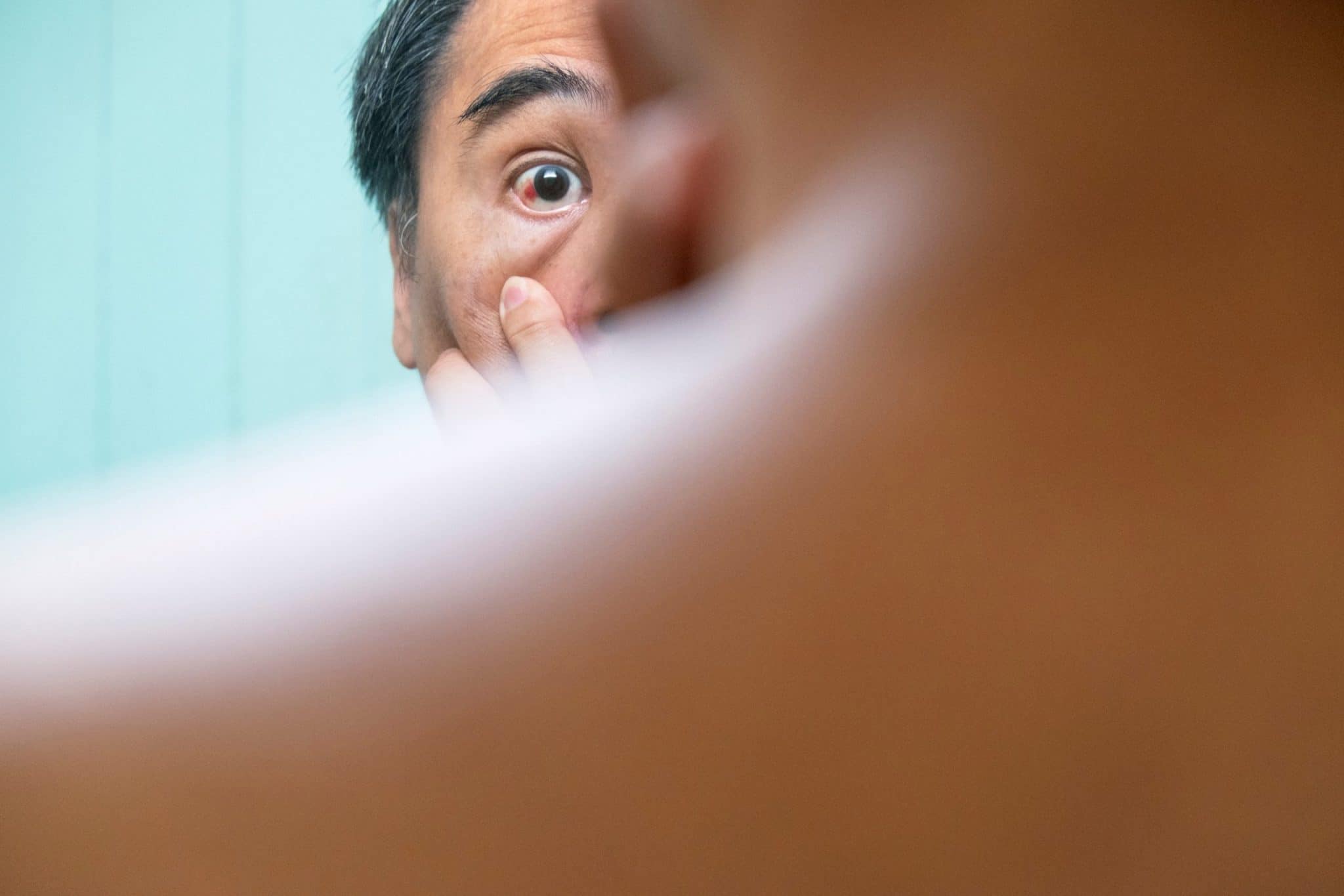My eye is bloodshot: Top 5 reasons
Bloodshot eyes are a very common symptom of a variety of different things, many of which are nothing to worry about, so it is not necessary to panic when you notice that your eyes are red. Some of the most common reasons for bloodshot eyes, from least to most concerning are:

1. Allergies
Red, itchy eyes can be caused by hayfever and other seasonal allergies, as well as pet dander, dust and mould. The best way to treat allergies is to avoid the allergens in the first place, but if this is not possible then over-the-counter eye drops and artificial tears can help. For more serious allergies, antihistamines can be bought from pharmacies or prescribed by a doctor.
2. Eye fatigue
Eye fatigue is a symptom, not a disease, and thus the cause of the problem needs to be targeted rather than trying to treat the red eyes themselves. The strain on your eyes is caused by looking at computers or driving for long periods of time or straining to read without glasses or contacts.
3. Over-wearing contact lenses
Contact lenses should only be worn for up to eight hours a day and should be cleaned and stored properly. Bloodshot eyes can be caused by bacteria build up on contacts which have not been kept properly clean, or which have been worn to sleep or for naps.
4. Eye infections
Conjunctivitis is the most common eye infection and is a major cause of bloodshot eyes. It occurs when the membrane which covers the sclera (the conjunctiva) becomes infected. With conjunctivitis eyes will feel itchy, sticky and sore, and may produce pus which sticks to the eyelashes, making it an easy issue to diagnose. Conjunctivitis is also easily treated both at home and by a doctor. A doctor can prescribe eye drops or antihistamines, whilst the patient can use cool flannels over the eyes to remove crust and soothe the eyes. Contact lens wearers should completely avoid wearing contacts until the symptoms have eased.
5. Glaucoma
Glaucoma is a very serious eye condition where the optic nerve is damaged by pressure building up inside the eye and requires treatment right away or it can lead to blindness. In patients who have not been diagnosed with glaucoma, symptoms to look out for including bloodshot eyes, severe eye pain, blurred vision, headaches and nausea, as well as rainbow halos around lights. The disease will be treated with eye drops or, in more serious cases, laser treatment or surgery. Once diagnosed with glaucoma, however, bloodshot eyes may just be a symptom of the treatment so, although it is worth seeing a doctor about red eyes, there is most likely nothing to worry about.
When to see your local optician
Most cases of bloodshot eyes can be treated at home or by visiting the pharmacy to receive eye drops, but you must contact a doctor immediately if your vision suddenly changes, you have a severe headache and sensitivity to light, you suffer any vomiting or nausea, you start seeing halos around lights or if you are unable to open your eye.
Related articles





